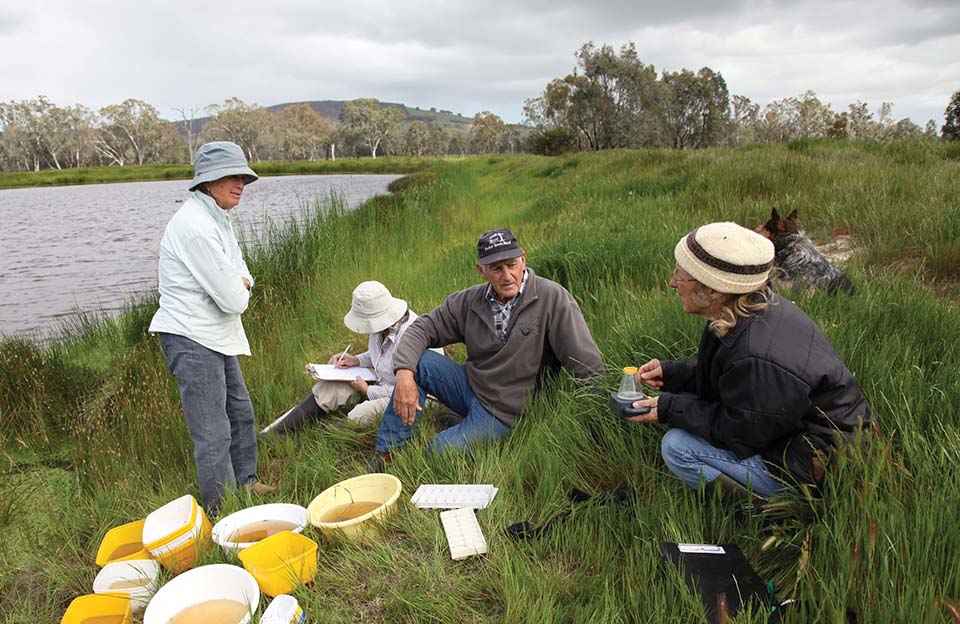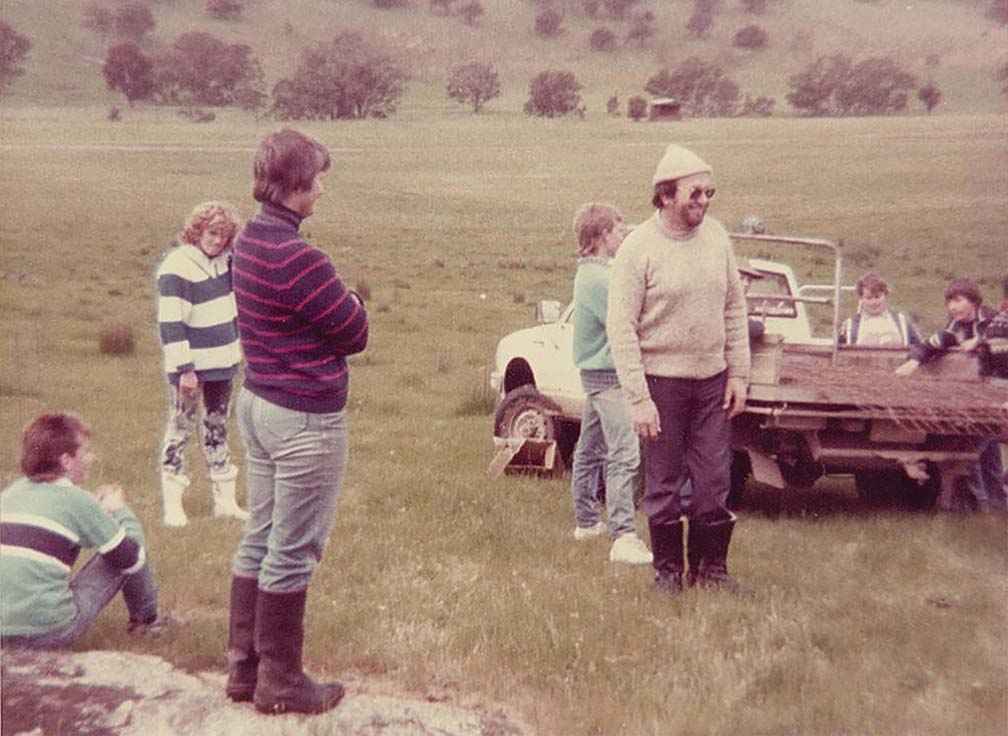Victorian Landcare Magazine - Spring 2016, Issue 67

Warrenbayne-Boho Land Protection Group
The Warrenbayne Boho Land Protection Group (WBLPG) was formed in August 1982 after a public meeting indicated concern about dryland salinity in the area. With a project area encompassing 40,000 hectares, including the Reef Hills State Park, local farmer Angus Howell was appointed as the group’s coordinator. Angus facilitated field days and information evenings to increase awareness and understanding about native trees, pastures, fodder trees and their role in salinity control, along with tackling rabbits, blackberries and Paterson’s curse. These were the big issues some 30 years ago.
The Rural Urban Links program, funded by the Sidney Myer Foundation, brought school and university students, other Landcare groups, interstate and international visitors, politicians and industry groups to Warrenbayne Boho to learn about the salinity problem. They would assist with tree planting and fencing and enjoy interacting with and learning from our farmers.
In the early 1990s softwood and hardwood farm forestry plantations were established to further address the concern for rising water tables. This sparked the need for whole farm planning workshops using aerial photographs. Some of our early corridor plantings to improve biodiversity were planned using these crude photographs.
Landholders soon became aware of the need to protect riparian habitat by fencing and revegetating rivers and streams to reduce the impact that stock have on bank stability, erosion and water quality. The rock weirs that were constructed on local streams continue to provide deep-water pools for improved habitat of native aquatic species such as blackfish, platypus, long necked turtles and native water rats.
River bank protection also included removing willows and replacing them with native blackwoods and river bottlebrush. These early revegetation projects targeting waterways and roadsides have matured to form valuable habitat connections within an otherwise fragmented landscape.
From 1995 until 2010, WBLPG contributed to the testing of local streams as part of the then Goulburn Broken Catchment Waterwatch program. This helped landholders to understand the effects of good waterway management at a catchment scale.

Above: Pam Robinson (at left) facilitates a whole farm planning field day for the Warrenbayne Boho Land Protection Group in 1987.
The successful introduction of the crown boring weevil and flea beetle for the biological control of Paterson’s curse has meant that the surrounding hills are now mostly green rather than purple each spring.
Pest plant and animal control continue to be a major focus for WBLPG. Local member Ken Heywood facilitates the Brush Off Project to tackle blackberries and rabbits. Ken makes sure new landholders are aware of these issues, and organises the spraying contractors to do the work. In recent years an abundance of new weed threats have emerged that require attention.
Our landholders’ understanding of the importance of biodiversity and ecology in the farming landscape has been enhanced with the erection and monitoring of nest boxes for threatened species.
The revegetation work we have completed provides suitable habitat for many native species, which is a great encouragement. We have also installed signs identifying significant roadside trees to increase commuter awareness of the value of
these natural assets.
In recent years WBLPG has focused on mixing farm production with Landcare issues. Native grasses are now acknowledged for their role in biodiversity and in productive grazing systems. The group has also hosted three supporting sites for Evergraze, a national program to produce more livestock from perennial pastures.
These ideas are also being used in the Green Haystacks Project. With funding from Woolworths, four trial sites have been set up on degraded saline areas to demonstrate how multipurpose perennial shrub and pasture species can be managed in a productive grazing system, while providing multiple benefits to the landscape.
"Now landholders understand the productive and biodiversity value of revegetating with local provenance native shrubs, herbs and grasses over a large area, without being so concerned about the loss of grazing area."
At a recent committee meeting members discussed the reasons for the group’s longevity. It was acknowledged that there have been periods where the group has declined, and that regeneration comes from landholders with new ideas and knowledge.
Advances in technology have helped with communication. Exposure to research, social events and a strong connection in the community have all been factors in keeping enthusiasm levels up. Having a core group of very dedicated members has also been critical to keeping the group going.
“There is a great sense of satisfaction that we have been able to improve our local landscape and to encourage other groups down the same path.”
Creating biodiversity hotspots on farms by fencing off dams and natural wetlands is a recent and ongoing project for WBLPG. Landholders have transformed degraded dams into small, biologically diverse, clean water wetlands connected to surrounding remnant woodlands. The project includes open days, aquatic macroinvertebrate identification, and water sampling to demonstrate how easy and rewarding it is for landholders to create their own wetland.
This project demonstrates a more collaborative approach to project funding and management. It includes WBLPG, the Swanpool Landcare Group, Euroa Arboretum, Gecko CLaN Landcare Network, and Strathbogie Ranges Conservation Network.
A new project for the group is the rehabilitation and revegetation of a section of the Honeysuckle Creek with local native species. The area, known as the Railway Reserve, is the old dam and water supply for Violet Town. By engaging the community in the project we are encouraging local residents, schools and landholders to visit and value this once forgotten area. It is a valuable way of demonstrating the need to protect the habitat of local species including Squirrel Gliders, Brush Tailed Phascogales and the Powerful Owl.
WBLPG still meets monthly for committee meetings and to enjoy social activities including the annual AGM that is always a lovely meal with local wines and an interesting guest presenter. Our annual Clean Up Warrenbayne Day each April is also a great way to socialise over lunch after collecting local roadside rubbish.
The achievements of the WBLPG provide a striking visual history of Landcare. Our early works established the first high density, small recharge plantings on hilltops, using only trees, for salinity control. Now landholders understand the productive and biodiversity value of revegetating with local provenance native shrubs, herbs and grasses over a large area, without being so concerned about the loss of grazing area.
There is a great sense of satisfaction that we have been able to improve our local landscape and to encourage other groups down the same path.
Above: Warrenbayne Boho Land Protection Group - A history of Landcare in the North East